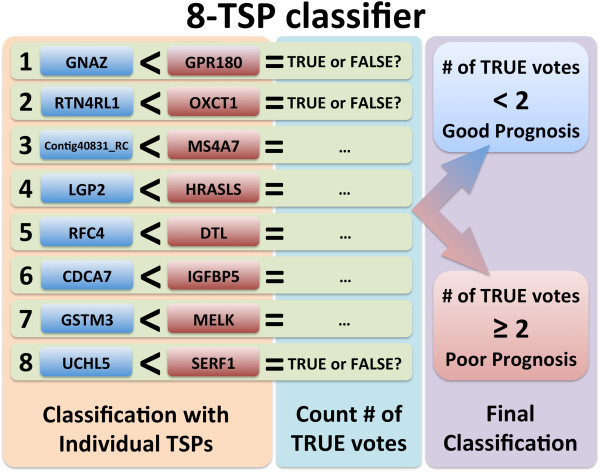Predicting breast cancer metastatic progression
A simple and reproducible breast cancer prognostic test
In this study we analyzed the expression of the genes constituting the 70-gene breast cancer prognostic signature, as implemented in the MammaPrint assay, to develop novel and simple prognostic predictors based on the Top-Scoring-Pair (TSP) algorithm. Visit this page to read the original manuscript.
Background. A limited number of gene expression-based prognostic and predictive tests are currently available as reference laboratory tests. While some of these have been successful, many other genomic-based predictors have been found to contain flaws and errors, resulting in a low success rate for developing clinically useful genomic signatures. These issues have raised concerns regarding the protocols used in computational research. Consequently, there is an increasing demand for a standardized approach to the reproducible development of genomic signatures that emphasizes full transparency, data sharing, and statistical rigor.
Results. In this study, we present the first fully reproducible analysis of the data used to train and test MammaPrint, an FDA-cleared prognostic test for breast cancer based on a 70-gene expression signature. We provide all the necessary software and documentation to enable researchers to build and assess genomic classifiers using these data. As a demonstration of the value of this reproducible research resource, we develop a simple prognostic classifier utilizing just 16 genes from the MammaPrint signature, achieving the same level of accuracy in predicting 5-year disease-free survival.
Conclusions. Our study offers a model for the reproducible development of computational algorithms aimed at identifying prognostic biomarkers in the era of personalized medicine.

